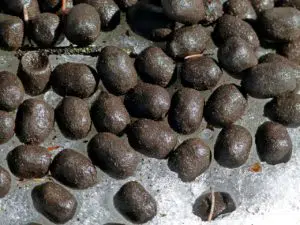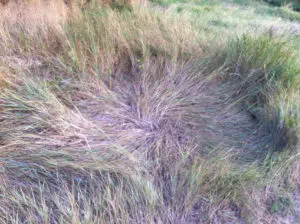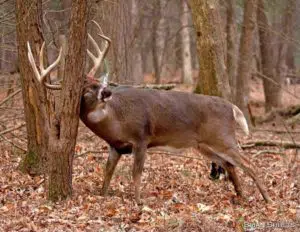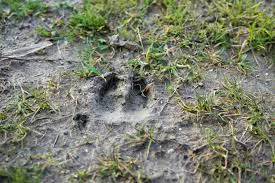| This post contains affiliate links. |
There is a primordial part of us that lusts for hunting.
We no longer need to do for surviving, but hunting for thousands upon thousands of years have left the evolutionary mark on us.
Before humans settled down for agriculture and began building cities and civilization, hunting and gathering were how we got food. Coming back to your home from successful hunt safeguarded your people from starvation and provided a source of much-needed protein.
This is probably why, even today, when most of us can get meat relatively cheaply from our local store, hunting still brings us an immense sense of satisfaction and pride. And nothing does that more, than hunting for deer.
Specifically, a white-tail deer, the most widespread species on the North American continent. It can be said that hunters and conservationists are ones who brought white-tail deer back to its huge numbers. This might sound weird, but it is true nevertheless. No one would suffer more from the dwindling amount of deer, than the hunters.
If you are new to deer hunting, it is the most reasonable thing to be intimidated and nervous. After all, you are going after a large and elusive animal, who has evolved specifically to avoid and evade its hunters. This is an extremely cautious animal that will run away at the first hint and scent of danger. That’s why it is of utmost importance to be well prepared in mind and body when hunting it.
In this article, we have compiled a list of things that you will need to look for, in order to find the game. It may be the first time you are leaving the city and have no idea how to act in a natural environment, so keeping this advice in mind should increase the possibility of successful hunt tenfold.
Few words about the deer
Those who are new to hunting and whose experience with deer solely relies on “Bambi” might not have any real life knowledge about this magnificent animal. But it is easy to correct that. One of the most important things you should be aware of, especially for you hunting purposes, is that deer is a crepuscular mammal (as opposed to diurnal and nocturnal).
Simply put, it does not follow the same sleeping patterns that we do. The preferred time of day for activities such as eating and mating is either at dawn or at dusk. As a general rule of thumb, you will find deer stalking around their feeding areas during nighttime, while during the early hour of the day, they prefer staying close to their sleeping areas. But as mentioned before, this is a general rule of thumb, so there are several instances when this might not apply. We will discuss them in this article as well.
Knowing how the deer spends its day, is essential for every hunter. It is the basis of all knowledge has to do with hunting them. For example, we know that during the day, the time when we are most active, deer prefer to find a safe haven and rest. If they sense no danger around them, they might stick to the same place all day long. They know about the danger hunters pose to them, so if they are certain that they have found a place safe from predators, they will stick with it.
This is especially clever, since they do this during the day, the time we are most active and pose the biggest danger. Once our prime time has passes and visibility is lower, they will venture out for feeding purposes. But that does not mean that they are less alert. There is virtually no situation when you will find the deer relaxed. So, even if you are in luck and have encountered the game during dusk, there is no reason to hope of an easy hunt.
An hour or two before the dusk, deer will leave there bedding areas and start looking for nutrition. Their feeding grounds will differ and depend on season and the topography of the area. Sometimes you may find them grazing on an open field and sometimes in a small opening in woods, full with browse to munch upon. These movements are not random. It is clear that deer do follow a routine.
However that is as long as they are not scared of something. So looking for signs of this routine and studying their movement patterns is the smartest thing a hunter can do. The rest of the article will focus on the sings that deer leave behind when following these routines. As with humans, you can find a wide range of those left behind. The forest might seem a dense and confusing place for a beginner, but once you know what to look for, everything becomes much clearer. As the city has its rules that we live by, so do the woods.
Things you need to look for
1. Scat

This might not look like it, but it may well be the reason you have come to the woods in the first place. You may often have seen some hunters in a movie, TV shows or even documentaries examining the animal faeces and deducting the information out of it. Well, you might well become one of them, if you learn how to get the right information out of this “encounter”.
Deer scat is pretty easy to distinguish from something left by another animal. Sorry, if this grosses you out, but for some, they may look like small chocolate chips or small pieces of coal with a bit softer texture. They will also vary in look depending on the season.
During autumn and winter, deer mostly feed on branches or anything else they can get from a tree, so their diet is rich in fibre. This is what determines the look of the scat I described above. However, their diet is much richer during the summer. There is much more green involved, so their faeces become much softer and a bit more watery. The quick Google image search for them, might not be how you want to spend your time, but it will definetely benefit you on your hunting session.
There is a number of things you can derive from a deer scat, besides the obvious one, that there are deer in the area. Depending on the texture and consistency of it, you can understand their diet. And by understanding their diet, you will know which area of the forest they are most likely residing in. Make sure to also check out this hilarious article on deer poop on Medium: – “Why deer poop matters”
2. Bite Marks

This leaves a distinct mark on the tree. Instead of a more or less clear cut made by animals with both lower and upper incisors, the end of the branched will seem ripped off. Like someone tried to twist it off clumsily.
If you managed to notice these marks that means you are on deer’s feeding territory. Depending on how the branch looks, you might also be able to distinguish if this is an old mark, or if it has been made during the previous few days.
Depending on how low or high the mark was left, you will also be able to know whether it is younger or older beast. If you see several of those marks in a relatively small territory, it is a good idea to make a hiding place, as the deer will be likely to visit the place again as part of their feeding routine.
3. Sleeping Habits

Discerning this shape may be harder or easier, depending on the season and the grass or leaves that cover the ground. If it’s a snowy season, that you will notice the bedding instantly. If there is only grass covering the ground, it’s also quite easy to see the round shape left by deer.
From the size of it, you will know whether it’s a younger or older deer. If you stumble upon single bedding, you might be looking at bedding of a single buck. Unlike doe, who usually stick with groups, they tend to stay separately, that is until the mating season starts.
4. Markings

This process has several different functions as well. The end of summer beckons the beginning of the rut, which means increased competition for finding a mate.
Rubbing their antlers, helps them increase the strength of their necks, which will be essential in a near-future battle for domination. By rubbing their antlers against the trees, they also make their presence known to both competitors and the mating partners. This happens due to special glands on the head of the buck, which provide a powerful odour when rubbed on the trees.
Deer are not the only animals that leave markings on the trees. Bears are also known to do that. But in that case, there is a clear incision on the bark of the tree. It is much sharper and pronounced. The marking of deer is more akin to something left by a blunt knife. This is why they prefer to leave it on trees that don’t have thick bark. You can also discern whether this mark has been left years ago, or in the current season.
Rubbing antlers damage the tree, so in time it becomes covered with new growth. So, if you see a mark that has growings on it, a washed out colour, or a sign of tree beginning to regenerate, it means that the mark has been left for quite some time already and may not be indicating the current presence of deer in the area. To find out more about identifying different types of deer check out this article.
5. Tracks

The hoofs of deer are extremely symmetrical, both halves of it being copies of each other. What leaves the mark is the frontal part of the hooves, which tend to imprint themselves into soft surfaces. In the event of deer running, it is even easier to see the tracking on most surfaces, as they go pretty deep into the ground. The easiest way of tracking the deer is on a snowy surface. Each step they make, no matter their gender, size or age, will live a distinct marking on snow.
Okay, you have found the tracks. Now, let’s see what information we can gather from it. The first thing that comes to mind, the larger the track is the larger is the size of the deer. If there is a larger distance between tracks, it means that the deer has been running. (Possibly disturbed by the predator or even your presence)
However if you are brand new to hunting, you may not know which track indicates a large and which track indicates a smaller deer.
Here is the general guideline: An older and larger buck tend to leave a track which is larger than 5 inches. Younger ones and does, tend to be an inch smaller and the youngest ones are around 2 inches long. Read this great article from huntstand blog to find out more about reading deer tracks.
